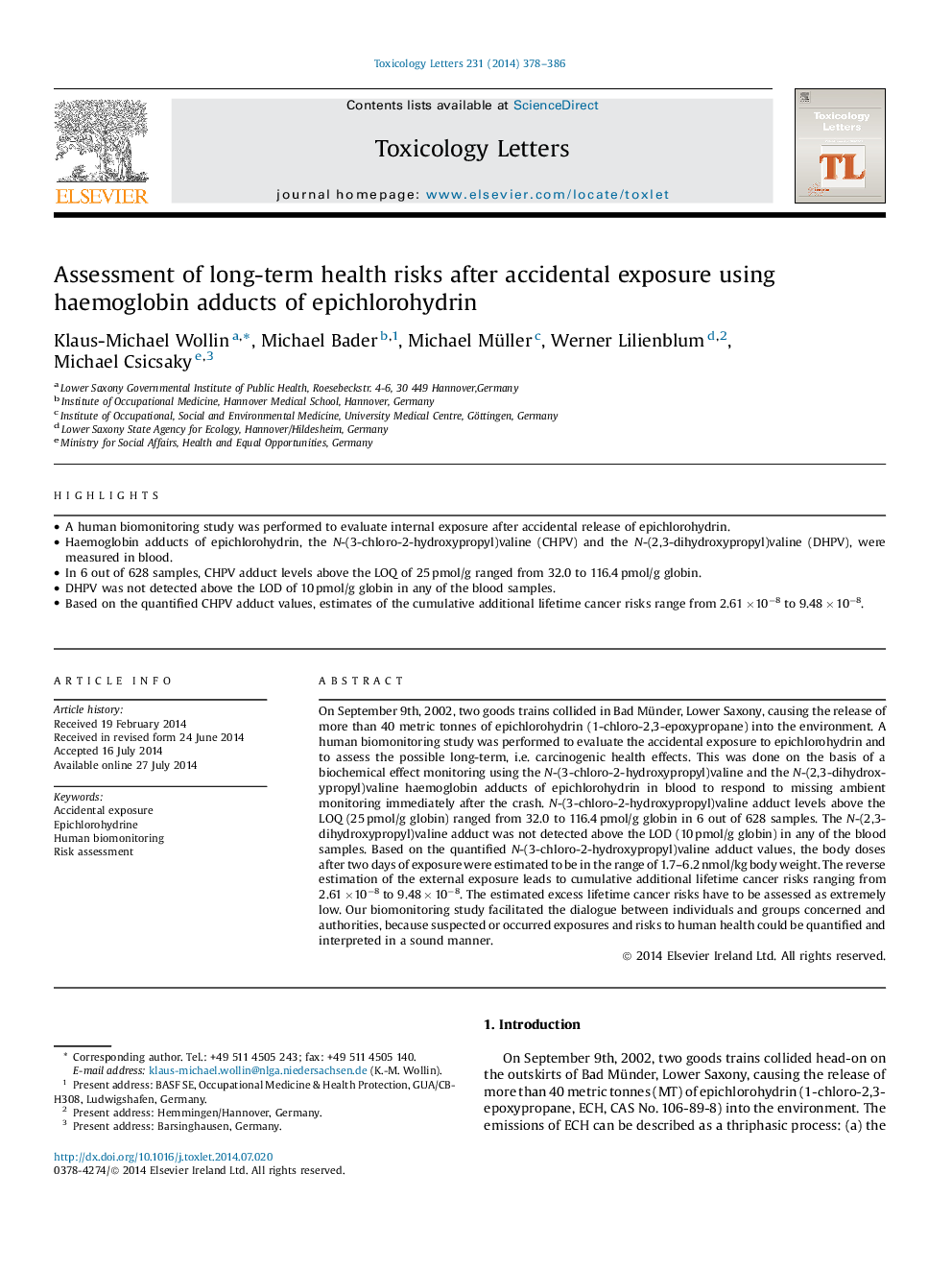| Article ID | Journal | Published Year | Pages | File Type |
|---|---|---|---|---|
| 5859969 | Toxicology Letters | 2014 | 9 Pages |
Abstract
On September 9th, 2002, two goods trains collided in Bad Münder, Lower Saxony, causing the release of more than 40 metric tonnes of epichlorohydrin (1-chloro-2,3-epoxypropane) into the environment. A human biomonitoring study was performed to evaluate the accidental exposure to epichlorohydrin and to assess the possible long-term, i.e. carcinogenic health effects. This was done on the basis of a biochemical effect monitoring using the N-(3-chloro-2-hydroxypropyl)valine and the N-(2,3-dihydroxypropyl)valine haemoglobin adducts of epichlorohydrin in blood to respond to missing ambient monitoring immediately after the crash. N-(3-chloro-2-hydroxypropyl)valine adduct levels above the LOQ (25Â pmol/g globin) ranged from 32.0 to 116.4Â pmol/g globin in 6 out of 628 samples. The N-(2,3-dihydroxypropyl)valine adduct was not detected above the LOD (10Â pmol/g globin) in any of the blood samples. Based on the quantified N-(3-chloro-2-hydroxypropyl)valine adduct values, the body doses after two days of exposure were estimated to be in the range of 1.7-6.2Â nmol/kg body weight. The reverse estimation of the external exposure leads to cumulative additional lifetime cancer risks ranging from 2.61Â ÃÂ 10â8 to 9.48Â ÃÂ 10â8. The estimated excess lifetime cancer risks have to be assessed as extremely low. Our biomonitoring study facilitated the dialogue between individuals and groups concerned and authorities, because suspected or occurred exposures and risks to human health could be quantified and interpreted in a sound manner.
Related Topics
Life Sciences
Environmental Science
Health, Toxicology and Mutagenesis
Authors
Klaus-Michael Wollin, Michael Bader, Michael Müller, Werner Lilienblum, Michael Csicsaky,
